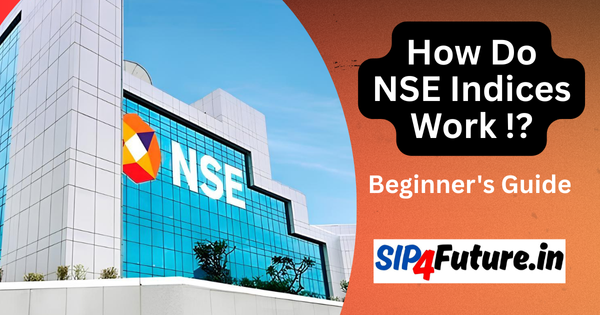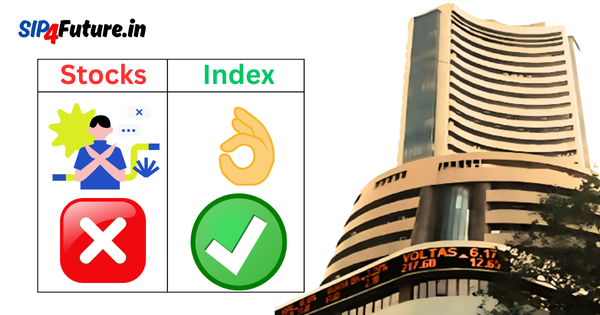Punjab & Sind Bank (PSB) has delivered a remarkable financial performance for the fourth quarter (Q4) and the full fiscal year (FY) 2024-25, reinforcing its position as a resilient player in India’s public sector banking landscape. With a net profit surge of 125.18% to ₹313 crore in Q4 and a 70.76% increase to ₹1,016 crore for FY25, PSB has showcased its ability to navigate a challenging economic environment. This article dives deep into the bank’s financial achievements, the factors driving its success, and the broader market dynamics influencing its stock performance, which saw a 3.17% rise to ₹30.24 on the National Stock Exchange (NSE) as of April 30, 2025.
How Did Punjab & Sind Bank Achieve Such Strong Q4 Results?
Robust Profit Growth
Punjab & Sind Bank’s Q4 FY25 net profit soared by 125.18% year-on-year (YoY) to ₹313 crore, up from ₹139 crore in Q4 FY24. This growth was underpinned by a 142.86% surge in operating profit to ₹816 crore, reflecting operational efficiency and strategic cost management. For the full year, the bank’s net profit climbed 70.76% to ₹1,016 crore, driven by consistent improvements across key financial metrics.
Net Interest Income and Margin Expansion
The bank’s Net Interest Income (NII) for Q4 FY25 grew significantly, contributing to the overall profitability. The Net Interest Margin (NIM) also improved, reaching 2.78% in Q3 FY25, a 24-basis-point increase YoY. This expansion reflects PSB’s ability to optimize its lending and deposit strategies in a competitive market.
| Financial Metric | Q4 FY25 | Q4 FY24 | YoY Growth |
|---|---|---|---|
| Net Profit (₹ crore) | 313 | 139 | 125.18% |
| Operating Profit (₹ crore) | 816 | 336 | 142.86% |
| Net Interest Income (₹ crore) | 939 (Q3 FY25) | 739 (Q3 FY24) | 27.06% |
| Net Interest Margin (%) | 2.78 (Q3 FY25) | 2.54 (Q3 FY24) | +24 bps |
Strategic Business Expansion
PSB’s total business grew by 11.69% YoY to ₹229,379 crore, with deposits reaching ₹129,774 crore and advances at ₹99,605 crore. Retail, Agriculture, and MSME (RAM) advances saw a robust 23.53% growth, highlighting the bank’s focus on high-yield segments. This strategic emphasis on retail and small business lending has bolstered its revenue streams while diversifying risk.
What Factors Contributed to Improved Asset Quality?
Decline in Non-Performing Assets
Asset quality is a critical indicator of a bank’s financial health, and PSB made significant strides in this area. The Gross Non-Performing Assets (GNPA) ratio improved to 3.38% in Q4 FY25 from 3.83% in Q3 FY25, while the Net Non-Performing Assets (NNPA) ratio dropped to 0.96%. These improvements reflect effective recovery mechanisms and prudent provisioning, with the Provision Coverage Ratio (PCR) rising to 89.63%.
Capital Adequacy and Risk Management
The bank’s Capital Adequacy Ratio (CRAR) stood at a healthy 17.41% in Q4 FY25, well above the regulatory requirement of 11.5%. This strong capital buffer provides PSB with the flexibility to pursue growth opportunities while maintaining resilience against potential economic shocks. The Tier I capital ratio, including Capital Conservation Buffer (CCB), improved to 14.04%, further strengthening the bank’s risk management framework.
| Asset Quality Metric | Q4 FY25 | Q3 FY25 | Q4 FY24 |
|---|---|---|---|
| Gross NPA (%) | 3.38 | 3.83 | 5.70 |
| Net NPA (%) | 0.96 | 1.25 | 1.80 |
| Provision Coverage Ratio (%) | 89.63 | 89.63 | 88.16 |
| Capital Adequacy Ratio (%) | 17.41 | 15.95 | 13.75 |
When Did Sectoral and Government Policies Impact PSB’s Performance?
Banking Sector Dynamics
The Indian banking sector has been a beneficiary of improving economic conditions and supportive government policies. Public sector banks (PSBs) collectively reported a 35.39% profit rise in Q2 FY25, driven by better asset quality and reduced provisions. Punjab & Sind Bank’s performance aligns with this trend, as its focus on retail and MSME lending taps into the growing demand for credit in these segments.
Government Initiatives
Government initiatives such as the Atmanirbhar Bharat package and the Emergency Credit Line Guarantee Scheme (ECLGS) have bolstered MSME and retail lending, directly benefiting banks like PSB. Additionally, the government’s push for financial inclusion has driven deposit growth, with PSB’s CASA (Current Account and Savings Account) deposits rising 2.36% YoY to ₹39,701 crore in Q3 FY25. The recent Qualified Institutional Placement (QIP) of ₹1,219.39 crore, which reduced the Government of India’s stake to 93.85%, further strengthened the bank’s capital base.
Global Market Influence
Global market conditions, including fluctuations in interest rates and commodity prices, have had a mixed impact on Indian banks. While rising global interest rates have increased funding costs, PSB’s improved NIM and focus on domestic retail lending have insulated it from some of these pressures. However, the bank remains vigilant about potential risks from global economic slowdowns, which could affect export-driven MSME clients.
How Does PSB’s Stock Performance Reflect Market Sentiment?
Stock Price Movement
On April 30, 2025, Punjab & Sind Bank’s stock closed at ₹30.24 on the NSE, marking a 3.17% gain. This positive movement reflects investor confidence in the bank’s Q4 FY25 results and its ability to sustain profitability. Over the past three years, PSB has delivered a return of 52.47%, though its market capitalization of ₹21,187.42 crore classifies it as a mid-cap stock with higher volatility.
Dividend Announcement
The bank’s board recommended a dividend of ₹0.07 per equity share for FY25, signaling confidence in its financial stability and commitment to shareholder value. This move is likely to attract income-focused investors, further supporting the stock’s positive sentiment.
Comparative Analysis
Compared to peers like Punjab National Bank (PNB), which reported a 145% net profit increase in Q2 FY25, PSB’s growth is competitive but more modest. PNB’s larger scale and branch network (10,159 domestic branches vs. PSB’s smaller footprint) give it an edge in deposit mobilization, but PSB’s focus on niche segments like retail and MSME lending allows it to carve out a distinct market position.
| Bank | Q4 FY25 Net Profit (₹ crore) | YoY Growth (%) | GNPA (%) | Market Cap (₹ crore) |
|---|---|---|---|---|
| Punjab & Sind Bank | 313 | 125.18 | 3.38 | 21,187.42 |
| Punjab National Bank | 4,508 (Q3 FY25) | 100 | 4.48 | 105,000 (approx.) |
| Bank of Maharashtra | 1,493 | 22.65 | N/A | 45,000 (approx.) |
What Are the Challenges and Opportunities Ahead?
Challenges in a Competitive Landscape
Despite its strong performance, Punjab & Sind Bank faces challenges such as a low interest coverage ratio and modest sales growth of 2.52% over the past five years. The bank’s high promoter holding (93.85% by the Government of India) may limit its flexibility in capital markets, and contingent liabilities of ₹7,629 crore pose a potential risk.
Opportunities for Growth
PSB is well-positioned to capitalize on India’s economic recovery, particularly in the retail and MSME sectors. The bank’s digital banking initiatives, including mobile apps and online services, align with the government’s Digital India campaign, enhancing customer reach. Additionally, its strong CRAR provides room for loan portfolio expansion, particularly in high-growth areas like green energy and infrastructure financing. For more details on PSB’s digital offerings, visit Punjab & Sind Bank’s official website.
How Do Global and Domestic Factors Shape PSB’s Future?
Domestic Economic Outlook
India’s GDP growth is projected at 6.5-7% for FY26, driven by consumption and infrastructure spending. This bodes well for PSB, as increased economic activity will spur credit demand. The Reserve Bank of India’s (RBI) focus on maintaining liquidity and controlling inflation will support stable interest rates, benefiting PSB’s NIM.
Global Economic Headwinds
Global uncertainties, such as geopolitical tensions and potential U.S. Federal Reserve rate hikes, could impact emerging markets like India. A stronger U.S. dollar may lead to capital outflows, pressuring PSB’s stock price. However, the bank’s domestic focus and limited exposure to international markets mitigate these risks.
What Are the Future Targets and Historical Returns?
Analyst Price Targets
Research institutes have expressed optimism about Punjab & Sind Bank’s growth trajectory. Below are some indicative price targets for the stock:
- Motilal Oswal: ₹35-38 (12-month target), citing improved asset quality and steady NIM expansion.
- Prabhudas Lilladher: ₹32-36, driven by retail lending growth and digital initiatives.
- Value Research: Maintains a “Hold” rating with a target of ₹34, emphasizing the bank’s mid-cap volatility.
These targets suggest a potential upside of 10-25% from the current price of ₹30.24, reflecting confidence in PSB’s fundamentals. For real-time stock updates, check NSE India or BSE India.
Historical Returns
Punjab & Sind Bank’s stock has shown resilience over the years:
- 1-Year Return: -52.7% (reflecting broader market corrections in mid-cap banking stocks).
- 3-Year Return: 52.47%, driven by post-COVID recovery and improved financials.
- 5-Year Return: Modest growth, impacted by slow sales growth and legacy asset quality issues.
The stock’s Price-to-Earnings (P/E) ratio of 20.46 and Price-to-Book (P/B) ratio of 1.80 indicate it is trading at a premium compared to peers, reflecting market optimism about its growth potential.
Conclusion
Punjab & Sind Bank’s Q4 and FY25 performance underscores its ability to deliver strong financial results in a competitive banking landscape. With a 125.18% surge in Q4 net profit, improved asset quality, and a robust capital base, PSB is well-poised for sustained growth. While challenges like low sales growth and contingent liabilities persist, the bank’s focus on retail and MSME lending, coupled with supportive government policies, positions it favorably for the future. Investors can track PSB’s progress on platforms like Moneycontrol for detailed financial insights.
Disclaimer: The information provided in this article is for educational purposes only and should not be considered financial advice. Investing in stocks involves risks, and past performance is not indicative of future results. Always conduct thorough research and consult a certified financial advisor before making investment decisions.




